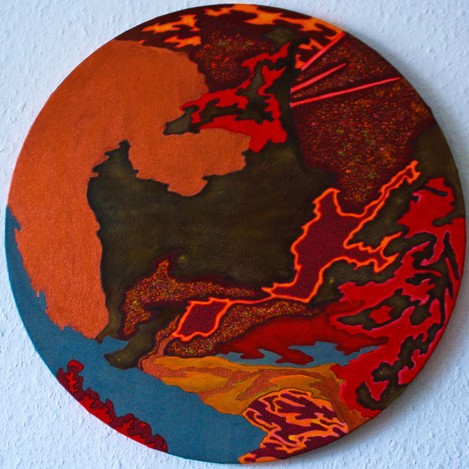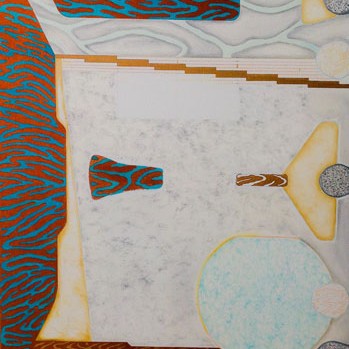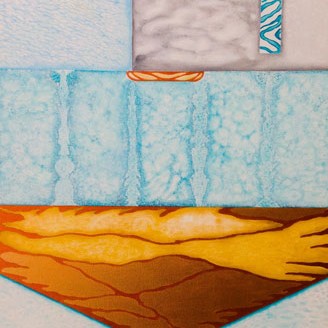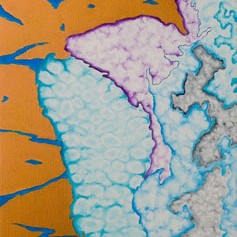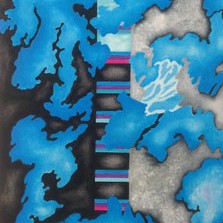Rainer Kurm appeared on the art scene in the late 1980s, belonging to the Stuudio 22 group, the spiritual mentor of which is Tõnis Vint. This group is characterized by its signifying-geometric and aesthetic language, mainly expressed through the medium of graphic art. In the time of a worldwide upsurge of neo-expressionism, the activities and output of Stuudio 22 artists look in the overall artistic panorama like a unique principle in itself, like an alchemical crystal. Elnara Taidre, the researcher on Tõnis Vint, refers to such a state as an aesthetic universe.
Rainer Kurm argues that although he has stayed away from the activities of the group, his own creative activity has not ceased. This solo exhibition provides thorough proof of the claim. The artist says that certain things must find an immediate way out of him. He must draw. This way some of the drawings become works of art, visualised structures, which will allow us to catch a glimpse of Kurm’s own universe.
Against the background of the artistic image of the group, Rainer Kurm stands out with his robust, surprising and fascinating searches for structure. In the 1990s Kurm made contact with the mainstream via his its attractive use of colour. His dominant geometric-constructive and intuitive free structure imposes fragments at a cosmic or cellular level onto a black background, here and there activated with colour.
The teacher can give a boost, but in art a route always lies towards reaching oneself. The logic of live processes usually carries one in a different direction, if one does not cling. In the set of works on display here, the black background is receding and rough-bright colours have been replaced with rococo-like tonal gentleness, although the overall colouring has remained unchanged. The adoption of oil painting has brought about a much greater abundance of nuance and denser painting. Kurm seems to be at a turning point in his creative process. His sense-driven paintings transform and build bridges between individual sections of the intermediate stages of his creative career. Straight lines do not disappear from these works; they continue but contrast with entropic structures. Only in some small paintings reminiscent of old maps can the pure visual codes of interaction between strong forces be seen. Switching to painting in oil will evidently direct Kurm work towards greater simplicity and purity, and perhaps even towards the inherent sensuality of work in oil, the presence of which is already clearly visible.
Kreg A-Kristring
.png)

